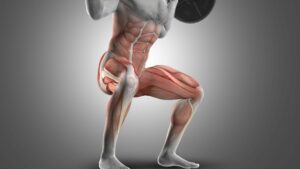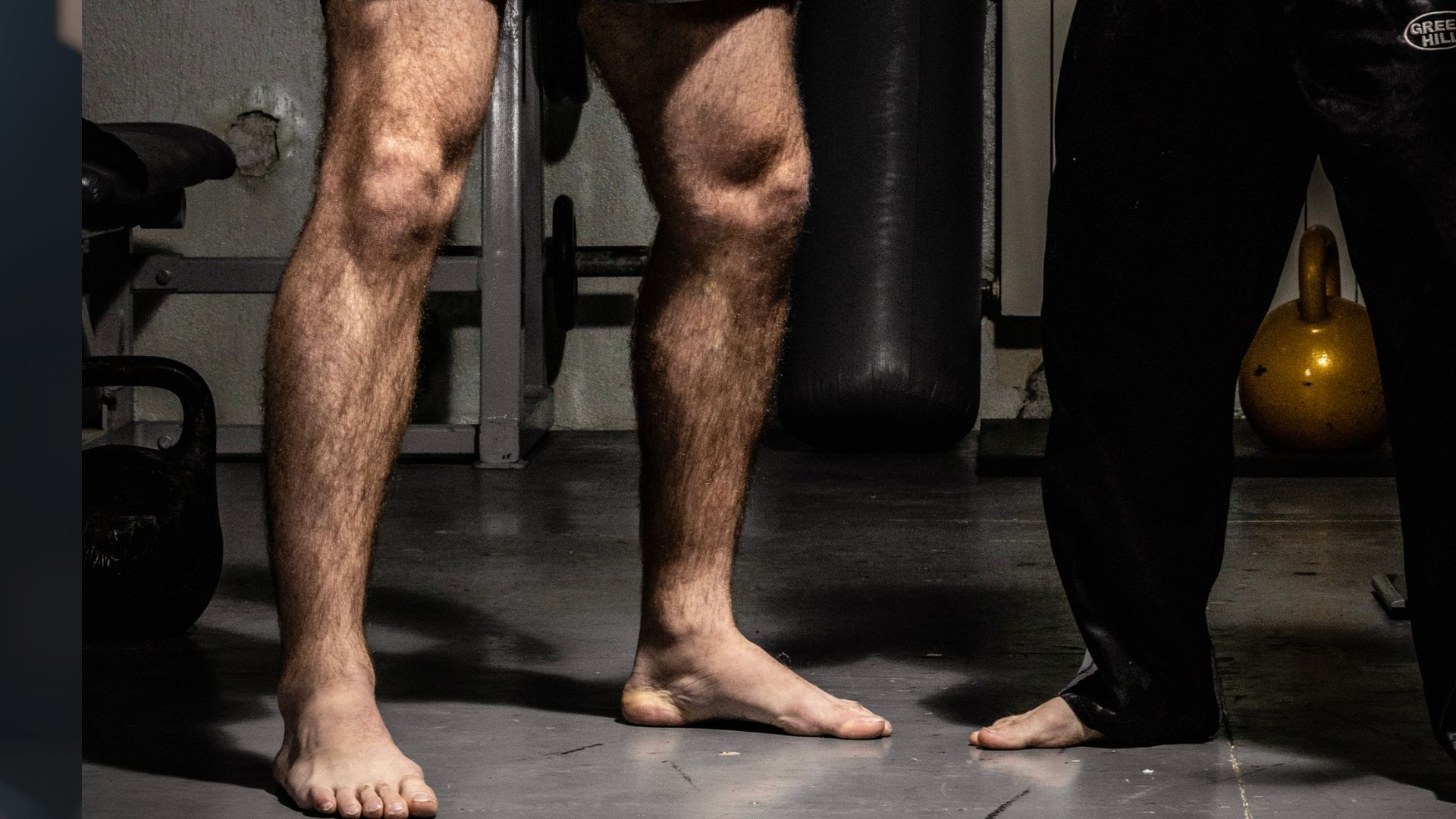Have you ever wondered why squats make your quadriceps feel stronger? It’s a common experience for many fitness enthusiasts and athletes alike.
In this article, we’ll delve into the science behind this phenomenon and explore the reasons why squats can have such a profound impact on your quadriceps muscles.
So, let’s dive right in and uncover the secrets behind the squat-induced quadriceps strength!
Squats engage the quadriceps and other lower body muscles. The quadriceps extend the knees and generate force during squats, while working eccentrically to control the descent. The repetitive contraction and lengthening of the quadriceps lead to muscle growth (hypertrophy) and strength development. Squats also activate the glutes, hamstrings, and core, enhancing overall lower body strength and stability.
Note that individual experiences may vary, and the feeling of your quadriceps getting stronger during squats can also be influenced by factors such as your current fitness level, technique, and overall training program. Consistency, proper form, and gradually increasing the intensity of your squats over time are key factors in optimizing quadriceps strength development.
You engage several muscles in the quadriceps.
Squats are one of the most effective exercises for developing lower body strength, particularly in the quadriceps muscles.
This compound movement engages multiple muscle groups and joints, making it a highly efficient exercise. Let’s explore in more detail how squats work and why they contribute to quadriceps strength development.
Anatomy of the Quadriceps:
The quadriceps muscle group consists of four muscles: rectus femoris, vastus lateralis, vastus medialis, and vastus intermedius.
They are located on the front of your thighs and are responsible for extending the knee joint and straightening the legs. These muscles play a crucial role in various lower body movements, including walking, running, jumping, and, of course, squatting.
Contraction and Lengthening:
During a squat, your quadriceps contract concentrically to extend the knees and lift your body upward. This concentric contraction generates the force necessary to push your body back to a standing position. As you descend into the squat, your quadriceps work eccentrically.
Eccentric contractions occur when a muscle lengthens while under tension, such as when you lower your body weight.
During the eccentric phase of the squat, the quadriceps act as decelerators, controlling the descent and ensuring a controlled and safe movement.
This eccentric loading places a significant demand on the quadriceps, leading to muscle fiber microtears and subsequent adaptation and growth.

Hypertrophy and Strength Development:
The repetitive nature of squats, combined with the challenge of increasing resistance, stimulates muscular adaptation over time.
This adaptation is known as hypertrophy. When you consistently perform squats, the muscle fibers in your quadriceps undergo microtrauma, triggering a series of physiological responses.
To repair and strengthen the damaged muscle fibers, your body initiates muscle protein synthesis.
This process involves the production of new proteins to replace the damaged ones and build stronger muscle tissue. Over time, this adaptation leads to increased muscle fiber size and strength.
To optimize quadriceps hypertrophy and strength development, it is essential to progressively overload your muscles.
This can be achieved by gradually increasing the weight or resistance used during squats. By challenging your quadriceps with heavier loads, you continue to stimulate muscle protein synthesis and promote further strength gains.
Activation of Other Muscles:
While the quadriceps are the primary movers during squats, other muscle groups also contribute to the movement.
These include the glutes, hamstrings, and core muscles.
The glutes (gluteus maximus, gluteus medius, and gluteus minimus) are engaged during squats to provide hip extension and contribute to overall lower body strength.
They play a vital role in generating power and stability, particularly during the ascent phase of the squat.
The hamstrings, located on the back of your thighs, act as synergists during squats. They help to stabilize the knee joint and assist in hip extension, working in conjunction with the quadriceps and glutes.
The core muscles, including the abdominals and spinal erectors, provide stability and help maintain proper posture throughout the squat movement.
The coordination and activation of these additional muscle groups during squats enhance the overall strength development in the quadriceps.
By engaging multiple muscles simultaneously, squats provide a comprehensive lower body workout that targets various muscle groups and promotes balanced strength development.
Variations and Examples:
Squats can be performed in various ways to target the quadriceps and other lower body muscles differently. Some common squat variations include:
Back Squats:
These are performed with a barbell resting on the upper back, challenging the quadriceps, glutes, and core.
Front Squats:
In this variation, the barbell is positioned in front of the shoulders, engaging the quadriceps and placing more emphasis on the core and upper back muscles.
Goblet Squats:
Here, a kettlebell or dumbbell is held in front of the chest, promoting an upright torso position and activating the quadriceps, glutes, and core.
Split Squats:
This variation involves lunging forward with one leg while keeping the other leg behind, placing greater emphasis on each quadriceps individually.
By incorporating these squat variations into your training routine, you can further challenge your quadriceps and other lower body muscles, ensuring well-rounded strength development.
Here’s a tabular overview explaining why squats make you feel your quadriceps getting stronger, along with additional details on how, when, where, examples, and what to consider:
| Question | Answer |
|---|---|
| Why do squats make me feel my quadriceps getting stronger? | Squats primarily target the quadriceps muscles, which are the muscles at the front of your thighs. The movement of squatting involves knee extension, which directly engages and strengthens the quadriceps. |
| How do squats strengthen the quadriceps? | Squats put a significant load on the quadriceps muscles, causing them to contract and generate force against resistance. This repeated muscular contraction during squatting leads to hypertrophy (muscle growth) and improved strength in the quadriceps. |
| When should I perform squats to target the quadriceps? | Squats can be performed during strength training workouts, such as leg day or full-body workouts. It’s recommended to include squats in your routine 2-3 times per week, allowing for adequate rest and recovery between sessions. |
| Where can I do squats to target the quadriceps? | Squats can be performed in various locations, such as the gym, fitness centers, or at home if you have the necessary equipment. You’ll need a squat rack or a stable surface to perform squats safely. |
| Examples of squat variations that target the quadriceps | – Barbell Back Squats
– Barbell Front Squats – Goblet Squats – Dumbbell Squats – Bodyweight Squats |
| What should I consider when performing squats? | – Maintain proper form and technique to avoid injury.
– Start with lighter weights or bodyweight squats and gradually increase the load. – Warm up adequately before performing squats to prepare your muscles. – Listen to your body and adjust the intensity and volume of squats based on your fitness level and goals. – If you have any pre-existing conditions or concerns, consult with a healthcare professional or a qualified fitness trainer before starting a squatting regimen. |
Conclusion
In conclusion, squats are a highly effective exercise for strengthening the quadriceps and developing overall lower body strength.
Through a combination of concentric and eccentric contractions, squats stimulate quadriceps hypertrophy and promote muscular adaptation.
The engagement of other muscle groups, such as the glutes, hamstrings, and core, enhances the overall strength development and stability.
By progressively overloading your muscles and incorporating variations, you can continue to challenge and strengthen your quadriceps, leading to improved muscle size, power, and functional performance.

Hey there, it’s Mike Rrsq, the Editor-in-Chief over at Jsquat.com, and I’m absolutely obsessed with all things squat fitness! I’ve been lucky enough to get some serious recognition for my work in this field. With a solid background in the fitness and wellness industry, I’ve been there right from the get-go, helping shape this website into what it is today.
You see, I’m not just the boss around here; I’m also a passionate contributor. I love sharing my insights through my articles, and trust me, they’re not your run-of-the-mill stuff. Each piece I write is a labor of love, filled with my expertise and real-world experience in the fitness universe. So, if you’re into fitness and looking for some inspiration, you’re in the right place!

